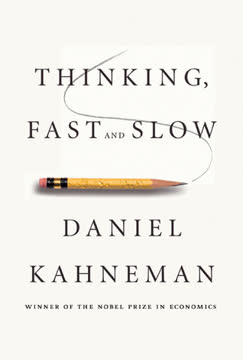Key Takeaways
1. Digital marketing leverages technology to engage audiences across multiple channels
Digital media and technology are no longer new – indeed, it's now more than 25 years since Sir Tim Berners Lee created the World Wide Web.
Integrated approach. Digital marketing harnesses the '5Ds' - digital devices, platforms, media, data, and technology - to create seamless customer experiences. This integrated approach allows businesses to reach and engage audiences at multiple touchpoints throughout the customer journey.
Evolving landscape. The digital marketing environment is dynamic, with rapid innovations in technology and consumer behavior. Marketers must continually adapt their strategies to leverage new platforms and tools effectively. Key areas of focus include:
- Search engine marketing (SEM)
- Social media marketing
- Content marketing
- Email marketing
- Mobile marketing
- Display advertising
- Analytics and data-driven decision making
2. The marketing mix evolves in digital environments, emphasizing personalization and interactivity
The Internet introduces new opportunities for dynamic pricing – for example, new customers could automatically be given discounted purchases for the first three items.
Personalization at scale. Digital channels enable unprecedented levels of personalization in marketing efforts. By leveraging customer data and behavioral insights, businesses can tailor their marketing mix to individual preferences and needs. This includes:
- Customized product recommendations
- Dynamic pricing based on user behavior
- Personalized content and messaging
- Targeted advertising
Interactive experiences. The digital environment facilitates two-way communication between brands and consumers. This interactivity transforms traditional marketing approaches:
- User-generated content and reviews
- Social media engagement and community building
- Interactive product configurators and visualizers
- Chatbots and AI-powered customer service
3. Online branding requires a unique approach to build trust and differentiation
Online brands need to understand their brands from the customer's perspective.
Digital brand elements. Building a strong online brand involves developing and communicating unique digital brand assets:
- Domain name and online presence
- User experience and interface design
- Content strategy and tone of voice
- Social media personality
- Customer service approach
Trust-building tactics. In the absence of physical cues, online brands must work harder to establish credibility and trust:
- Transparent pricing and policies
- Security certifications and trust badges
- Customer reviews and testimonials
- Clear value propositions
- Consistent cross-channel branding
4. Digital pricing strategies balance transparency with value-based approaches
Arguably, Amazon is seeking to bring the convenience of online, offline.
Price transparency. The internet has increased price transparency, making it easier for consumers to compare offers. This has led to:
- Increased competition and pressure on margins
- The rise of price comparison sites and aggregators
- Dynamic pricing strategies based on real-time market data
Value-based pricing. To combat commoditization, businesses must focus on communicating value beyond price:
- Bundling products and services
- Offering unique features or experiences
- Leveraging brand equity and loyalty programs
- Implementing personalized pricing and promotions
5. E-commerce transforms product offerings and delivery models
Virtual inventory enables new offerings to be made available to smaller segment sizes, an approach known as micro-targeting.
Digital product innovation. E-commerce enables new types of products and services:
- Digital downloads (e.g., software, music, e-books)
- Subscription-based models
- Customizable and personalized products
- Virtual and augmented reality experiences
Omnichannel retail. The lines between online and offline commerce continue to blur:
- Click-and-collect services
- Virtual showrooms
- Mobile commerce and in-app purchasing
- Integration of online and in-store experiences (e.g., AmazonGo)
6. Content marketing and social media drive customer engagement and loyalty
Creating a compelling, interactive experience including rich media that reflects the brand.
Content as a strategic asset. High-quality, relevant content serves multiple marketing objectives:
- Attracting and engaging target audiences
- Establishing thought leadership and expertise
- Improving search engine visibility
- Supporting the customer journey at all stages
Social media engagement. Platforms like Facebook, Instagram, and LinkedIn offer powerful tools for brand building and customer interaction:
- Community building and fostering brand advocacy
- Real-time customer service and feedback
- Influencer partnerships and user-generated content
- Targeted advertising and remarketing
7. Data-driven insights enable targeted and measurable marketing campaigns
When defining objectives and goals you should use clear definitions.
Analytics-driven strategy. Digital marketing allows for unprecedented measurement and optimization:
- Web analytics to track user behavior and conversions
- A/B testing and experimentation
- Attribution modeling to understand marketing impact
- Predictive analytics for forecasting and personalization
Performance metrics. Key performance indicators (KPIs) help marketers assess and improve their efforts:
- Traffic and engagement metrics (e.g., unique visitors, time on site)
- Conversion rates and revenue metrics
- Customer lifetime value
- Return on ad spend (ROAS)
- Cost per acquisition (CPA)
By leveraging data-driven insights, marketers can continually refine their strategies, allocate resources more effectively, and demonstrate clear ROI for their digital marketing initiatives.
</assistant>
Last updated:
Review Summary
Readers find Digital Marketing comprehensive and valuable for both theory and application. It covers all aspects of digital marketing with case studies and current examples. The book is praised for its academic rigor while remaining relevant to real-world scenarios. It's considered ideal for those new to marketing concepts and those seeking a refresher on digital marketing. Some readers appreciate its coverage of digital transformation in a broader context. While generally well-received, one reviewer noted its academic style might be challenging for some readers.
Download PDF
Download EPUB
.epub digital book format is ideal for reading ebooks on phones, tablets, and e-readers.






